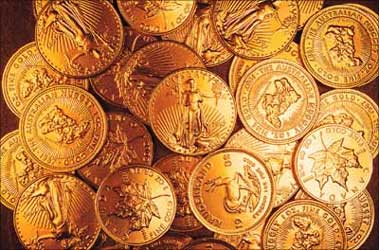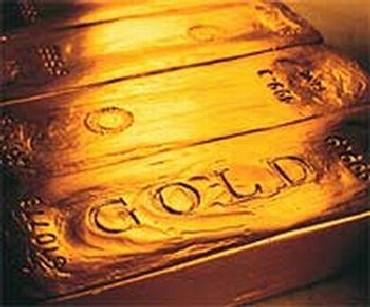 | « Back to article | Print this article |
How to raise cash through paper gold
Loan against gold ETFs is a cheaper form of borrowing, but it may take longer to be sanctioned.
With gold prices on the rise, financial institutions are trying different ways to attract the customer.
In the past month, India Infoline, Religare Securities and Reliance Commercial Finance have started lending against 'paper gold', more popularly known as gold exchange-traded funds.
The process is similar to borrowing against shares, as the units are in a demat form.
However, the units have to be transferred to the lender.
Click NEXT to read further. . .
How to raise cash through paper gold
If one compares this form of borrowing with others, such as physical gold, personal loans, etc, this product clearly scores on the rates of interest.
At 13-16 per cent annually, this is perhaps the cheapest form of borrowing.
Loans against physical gold come at a differential rate, depending on the loan to value.
For instance, HDFC Bank charges 12.5 per cent interest annually for lending up to 80 per cent in case of physical gold.
For loans of up to 95 per cent of the gold value, interest is charged at 15 per cent and is calculated on a daily basis. It is higher for non-banking financial companies, at 16-24 per cent.
Click NEXT to read further. . .
How to raise cash through paper gold
There is another catch.
The price at which the bank or NBFC values the gold is also much lower than market prices.
So, though the price of gold is Rs 22,476 per 10g, if you wish to borrow against your jewellery from Muthoot, the rate applicable today was Rs 17,900 -- down Rs 4,576 or around 20 per cent.
If borrowing against coins and bars, the rate would be Rs 18,100.
In other words, the NBFC is keeping a margin of 20 per cent to cushion against any fluctuations in gold prices.
After this, they lend up to 80-95 per cent of the gold value.
Click NEXT to read further. . .
How to raise cash through paper gold
In comparison, one can borrow up to 75-80 per cent against ETFs. In other words, the loan to value ratio for both physical gold and ETFs is the same.
Shariq Hoda, executive vice-president, third party products, Religare Securities, explains: "Since the loan amount is decided based on the net asset value, you should expect a higher loan amount.
"However, most lenders maintain a high margin of 20-25 per cent."
Borrowing against physical gold is faster as the loan is sanctioned within a couple of hours.
Click NEXT to read further. . .
How to raise cash through paper gold
Loans against ETFs are sanctioned within three to seven days.
There are other options of raising cash like shares, mutual fund units and property.
In case of shares and MF units, banks typically lend only 50-60 per cent of the actual value.
But, as Suresh Sadagopan, a certified financial planner puts it, "Your options could be limited, as banks have a pre-specified list of scrips or mutual funds they lend against.
"It is not a very exhaustive list and mostly includes only blue-chip companies."
There is a minimum amount as well that you can borrow through these various options.
Click NEXT to read further. . .
How to raise cash through paper gold
For instance, you must borrow a minimum Rs 100,000 against your gold ETF holdings from Reliance Commercial Finance.
The minimum amount for loans against shares and MFs is also in a similar range, about Rs 100,000-200,000 lakh.
Since the loan amount can be as low as 50 per cent of the actual value of securities, you must be holding securities worth Rs 200,000-400,000 to consider the option.
Click NEXT to read further. . .
How to raise cash through paper gold
For loans against property, the minimum amount to be borrowed could be even as high as Rs 10 lakh (Rs 1 million).
As far as repayment goes, for physical gold loans there is no specific loan tenure.
You have to simply keep servicing the account, that is, paying off the interest on a monthly basis.
Failing this, there could be a penalty charge of about two per cent of the interest amount. Repayment of gold ETFs and other securities could be done similarly or via equated monthly instalments, depending on your agreement with the lender, over a year (extendable by paying a fee).
It could last much longer for loans against properties though, almost 10-15 years.







